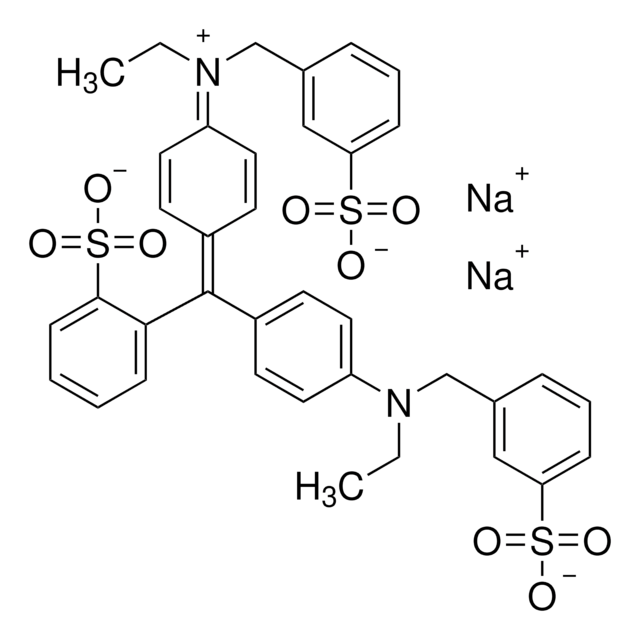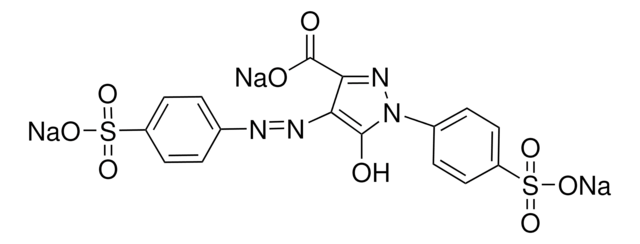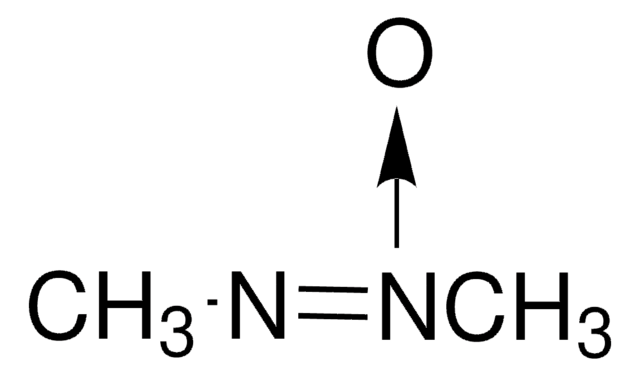A1420
Ames-Medium
With L-glutamine, without sodium bicarbonate, powder, suitable for cell culture
Anmeldenzur Ansicht organisationsspezifischer und vertraglich vereinbarter Preise
Alle Fotos(1)
About This Item
UNSPSC-Code:
41161501
NACRES:
NA.75
Empfohlene Produkte
Qualitätsniveau
Form
powder
Methode(n)
cell culture | mammalian: suitable
Komponenten
glucose: 1.081 g/L (Dextro)
NaHCO3: no
L-glutamine: 0.073 g/L
Versandbedingung
ambient
Lagertemp.
2-8°C
Allgemeine Beschreibung
Ames′ Medium wurde zum Ernähren von Retinagewebe in relativen Kurzzeitkulturen formuliert. Es eignet sich zum Erhalten von Gewebe des zentralen Nervensystems in vitro.
Anwendung
Ames′ Medium wird verwendet, um das Auge von Ratte/Maus/Makake für die Isolierung der Retina zu erhalten.
Menge
Die Formulierung enthält 8,8 Gramm Pulver je Liter Medium.
Rekonstituierung
Ergänzungsmittel mit 1,9 g/L Natriumbicarbonat
Lagerklassenschlüssel
11 - Combustible Solids
WGK
WGK 2
Flammpunkt (°F)
Not applicable
Flammpunkt (°C)
Not applicable
Analysenzertifikate (COA)
Suchen Sie nach Analysenzertifikate (COA), indem Sie die Lot-/Chargennummer des Produkts eingeben. Lot- und Chargennummern sind auf dem Produktetikett hinter den Wörtern ‘Lot’ oder ‘Batch’ (Lot oder Charge) zu finden.
Besitzen Sie dieses Produkt bereits?
In der Dokumentenbibliothek finden Sie die Dokumentation zu den Produkten, die Sie kürzlich erworben haben.
Kunden haben sich ebenfalls angesehen
Antoine Chaffiol et al.
Molecular therapy : the journal of the American Society of Gene Therapy, 25(11), 2546-2560 (2017-08-16)
The majority of inherited retinal degenerations converge on the phenotype of photoreceptor cell death. Second- and third-order neurons are spared in these diseases, making it possible to restore retinal light responses using optogenetics. Viral expression of channelrhodopsin in the third-order
Qiuju Jiang et al.
IEEE transactions on neural systems and rehabilitation engineering : a publication of the IEEE Engineering in Medicine and Biology Society, 26(5), 969-976 (2018-05-13)
Significant progress has been made recently in treating neurological blindness using implantable visual prostheses. However, implantable medical devices are highly invasive and subject to many safety, efficacy, and cost issues. The discovery that ultrasound (US) may be useful as a
Shijun Weng et al.
Journal of biological rhythms, 24(5), 391-402 (2009-09-17)
Intrinsically photosensitive retinal ganglion cells (ipRGCs) project to the suprachiasmatic nucleus (SCN) and are essential for normal photic entrainment of global circadian rhythms in physiology and behavior. The effect of light on the central clock is dependent on circadian phase
Kasey Rose et al.
Molecular neurodegeneration, 12(1), 28-28 (2017-04-13)
Light exposure triggers movement of certain signaling proteins within the cellular compartments of the highly polarized rod photoreceptor cell. This redistribution of proteins between the inner and outer segment compartments affects the performance and physiology of the rod cell. In
Michael B Manookin et al.
The Journal of neuroscience : the official journal of the Society for Neuroscience, 28(16), 4136-4150 (2008-04-18)
Cone signals divide into parallel ON and OFF bipolar cell pathways, which respond to objects brighter or darker than the background and release glutamate onto the corresponding type of ganglion cell. It is assumed that ganglion cell excitatory responses are
Unser Team von Wissenschaftlern verfügt über Erfahrung in allen Forschungsbereichen einschließlich Life Science, Materialwissenschaften, chemischer Synthese, Chromatographie, Analytik und vielen mehr..
Setzen Sie sich mit dem technischen Dienst in Verbindung.











